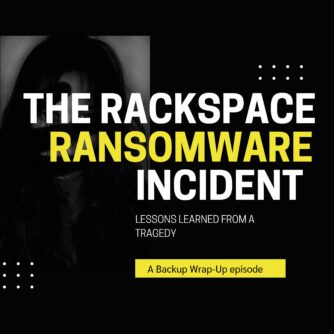There’s a story going around about Apple’s MacOS APFS sparse disk images occasionally losing their mind and throwing documents out the window. Yet another example of why we do backups.

Don’t use APFS images for backups
I’ve never liked these disk images that Apple makes –– as a backup method. This is just another example of why. For those unfamiliar with them, they’re like a fancy .ISO image. It’s one big file that you can mount as a file system. The “sparse” part is what the industry would call a thin-provisioned version of this image. That is, you tell it how big it’s allowed to grow, but it will only consume the amount of space that is actually put into the image.
The problem that was recently discovered is that if the APFS sparse image runs out of virtual space, it will just keep writing the files like nothing’s wrong. Even worse, the files will appear to have been copied, as they’ll be in RAM. Unmount the disk image and remount it and you’ll find that the files were never copied. Surely Apple needs to fix this.
The one place you’ll see a disk image is if you buy a Time Capsule Time Machine backup appliance. I’m not sure why, but they chose to do it this way, instead of just mirroring the filesystem, the way Time Machine does on a local machine. I’m sure they had their reasons, but this is where you’ll see disk images. (Actually, I haven’t looked into the details of the Time Capsules in a while, so they could have changed. But I can’t think of any other place where you’d see such a beast.)
I’ve never been a fan

Nine years ago I wrote an article about how I wasn’t a huge fan of Time Machine, and how I really didn’t like Time Capsules because of their disk images — and how they can get corrupted. Time Machine is nice for upgrades or a local copy, but I don’t think you should rely on it as your only backup.
This is why we do real backups. Real backups are scheduled and happen all the time without you having to do anything. Their data is stored somewhere else, which today typically means the cloud. I simply can’t think of another viable way to backup mobile users and home users.
Written by W. Curtis Preston (@wcpreston), four-time O'Reilly author, and host of The Backup Wrap-up podcast. I am now the Technology Evangelist at Sullivan Strickler, which helps companies manage their legacy data






